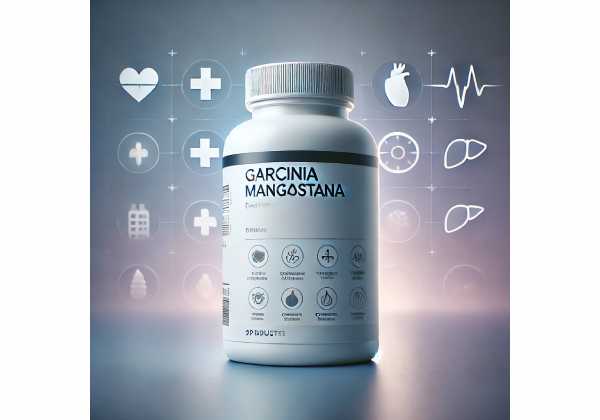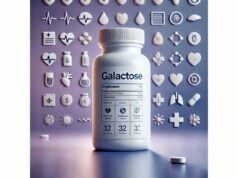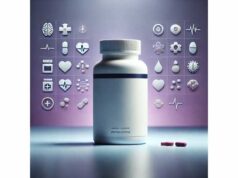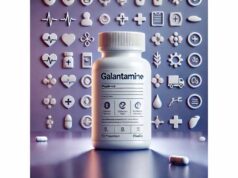
Mangosteen (Garcinia mangostana) is a Southeast Asian fruit celebrated for its sweet, floral flavor and a thick purple rind rich in biologically active xanthones such as α-mangostin. Beyond the culinary appeal, extracts from the fruit’s pericarp (rind) appear to influence pathways tied to inflammation, oxidative stress, metabolism, and even mood. Early clinical trials suggest potential benefits for insulin sensitivity and systemic antioxidant status, while topical and oral preparations are being explored for oral health. At the same time, the science is still maturing: quality, standardization, and dosing vary widely among products, and not every claim is supported by strong human data. This guide summarizes what mangosteen is, how it may work, what results to expect, how to use it wisely, and who should avoid it—so you can make an informed decision that fits your goals and medical context.
Key Insights
- May support insulin sensitivity and lower inflammatory markers in some adults; effects appear modest and preparation-specific.
- Possible mood and oral health benefits are under study; evidence is mixed and evolving.
- Typical studied doses: extract 400 mg/day; mangosteen beverages ~245–300 mL/day; topical gels ~4%.
- Safety caveat: potential drug interactions (CYP enzymes) and blood-sugar effects; use caution with anticoagulants and diabetes medications.
- Avoid if pregnant, breastfeeding, scheduled for surgery, or if you have uncontrolled chronic illness unless a clinician approves.
Table of Contents
- What is Garcinia mangostana and how does it work?
- Do the benefits hold up in real people?
- How to use mangosteen: forms and practical tips
- How much per day? Evidence-informed dosages
- Safety, side effects, and interactions
- Evidence snapshot and research gaps
What is Garcinia mangostana and how does it work?
Mangosteen is an evergreen tree native to Southeast Asia. The edible portion—the white arils—is prized for taste, but most research focuses on the purple pericarp (rind). That rind concentrates distinctive polyphenols called xanthones (notably α-mangostin and γ-mangostin) along with procyanidins and other phenolics. These molecules have been shown in experimental models to:
- Modulate inflammatory signaling (for example, NF-κB and downstream cytokines such as TNF-α and IL-6).
- Influence oxidative stress by scavenging reactive species and up-regulating endogenous antioxidant enzymes.
- Interact with metabolic pathways relevant to lipid handling, adipocyte biology, and glucose uptake (PI3K/AKT/GLUT transporters in preclinical work).
- Affect oral microbial biofilms and local inflammatory mediators, which is why mangosteen appears in periodontal gels and combined oral-care supplements.
Because mangosteen is a plant matrix—not a single molecule—its effects depend on the composition and bioavailability of its constituents. Two details matter in practice:
- Standardization and extract type. Commercial products vary: some are dried pericarp powders; others are hydroethanolic extracts, juices, or proprietary blends. Xanthone content—and the relative proportion of α-mangostin—can differ by cultivar, geography, solvent, and manufacturing steps. Labels sometimes list “xanthones per serving” or a percentage of α-mangostin; when present, those disclosures help with comparison.
- Absorption and metabolism. Human and animal studies show that xanthones are absorbed and rapidly conjugated (glucuronidation/sulfation), which influences circulating levels and half-life. Food context and co-ingestion of fat can increase uptake for lipophilic constituents. Some xanthones may also interact with drug-metabolizing enzymes (cytochrome P450s), a key safety consideration addressed later.
In short, mangosteen’s putative benefits stem from a combination of anti-inflammatory, antioxidant, and metabolic effects most strongly associated with its pericarp-derived xanthones. How much of this translates into meaningful outcomes in humans depends on the specific product and dose—and on the health outcome being measured.
Do the benefits hold up in real people?
Metabolic health (insulin sensitivity, inflammation). A small randomized pilot in obese women with insulin resistance reported improved insulin sensitivity (HOMA-IR) after 26 weeks of mangosteen extract alongside lifestyle counseling compared with counseling alone. Changes in weight and waist circumference were directionally favorable but not robust between groups. Biomarkers of low-grade inflammation such as high-sensitivity C-reactive protein declined within the treatment arm. While promising, the sample size was modest and results need replication with larger, diverse cohorts and product standardization.
Systemic antioxidant status. In healthy adults, a randomized, double-blind trial of daily mangosteen-based beverage intake for 30 days found improvements in circulating antioxidant/oxidative stress markers and a reduction in C-reactive protein from baseline. Such studies suggest short-term biomarker shifts are possible with certain preparations; whether these translate into long-term clinical advantages (fewer infections, cardiometabolic risk reduction) remains unproven.
Oral health. Local delivery of mangosteen pericarp (for example, 4% gels applied into periodontal pockets) and multi-ingredient oral supplements that include mangosteen have shown improvements in gingival indices and inflammatory markers in people with gingivitis or early periodontitis. Because some products combine mangosteen with propolis or other actives, it is difficult to attribute effects to mangosteen alone. Still, the antimicrobial and anti-inflammatory rationale is consistent with mechanistic data.
Mood and brain health. Interest in mangosteen as an adjunctive strategy in mood disorders stems from its anti-inflammatory and antioxidant profile. A recent 24-week randomized, placebo-controlled trial tested pericarp extract added to usual care for bipolar depression. Overall, improvement in core depressive symptoms versus placebo was limited, although some mood and functioning measures favored the mangosteen arm at 24 weeks. Benefits attenuated after discontinuation. These findings point to potential but nuanced effects that require replication and clearer identification of responders.
Body composition and fitness. Proprietary blends that include mangosteen extracts have been studied in small trials of athletes and individuals with overweight, sometimes at 800 mg/day of a combined formula. While some endpoints (strength, body composition) improved over short periods, confounding by co-ingredients and lifestyle prescriptions limits generalization to pure mangosteen products.
Skin and dermatology. In vitro and animal data show antimicrobial and anti-inflammatory actions against acne-related bacteria and UV-induced skin damage. Human evidence is sparse; topical formulations are being explored but remain preliminary.
Bottom line: In humans, the most consistent signals appear in insulin sensitivity and systemic inflammatory markers with specific extracts and doses; there is emerging but mixed evidence for mood and oral health outcomes. Effects are modest, product-dependent, and should be viewed as complementary to—not substitutes for—proven therapies and lifestyle measures.
How to use mangosteen: forms and practical tips
You can use mangosteen in several ways. Choosing the right form depends on your goal, tolerance, and the level of evidence supporting each approach.
1) Standardized pericarp extracts (capsules/tablets).
These are the most studied for metabolic outcomes. Look for:
- Clear labeling of extract type (e.g., pericarp), extraction solvent (e.g., water/ethanol), and standardization (e.g., % xanthones or α-mangostin).
- Dose transparency per capsule and per day (e.g., 400 mg/day total).
- Quality seals (e.g., third-party testing) and lot numbers. Supplements vary widely; avoid “proprietary blends” without quantitative disclosure.
2) Functional beverages/juices.
Some trials used ~245–300 mL/day of mangosteen-containing drinks. These often include vitamins/minerals and other botanicals; sugar content can be substantial. If you’re targeting metabolic or weight-related goals, favor low-sugar formulations, consider timing with meals, and integrate into your overall calorie plan.
3) Topical and oral-care products.
Gels or rinses featuring mangosteen (sometimes with propolis) are used for gingival support under professional guidance. If your dentist recommends a local-delivery gel, confirm the concentration (many studies used ~4%) and duration/frequency.
4) Culinary use (fresh fruit, teas).
Enjoying the fruit supports overall nutrient intake and hydration but delivers far fewer xanthones than standardized pericarp extracts. Teas made from dried pericarp are traditional; however, composition varies and dosing is harder to control.
Practical usage tips
- With food: Many lipophilic xanthones absorb better with dietary fat. Taking capsules with a meal can improve consistency and reduce GI discomfort.
- Start low and go slow: If you are new to mangosteen, begin at the low end of the suggested serving on the product label for 1–2 weeks, then adjust if well tolerated.
- Track what matters: Use simple metrics tied to your goal (e.g., fasting glucose/CGM trends, CRP via periodic labs when appropriate, oral health indices from your dentist, or symptom scales for mood under clinician supervision).
- Stack wisely: If you already take anti-inflammatory or antioxidant supplements (e.g., curcumin, resveratrol), overlapping mechanisms may raise the chance of GI upset or interactions. Keep your clinician informed and simplify your stack where possible.
- Cycle if uncertain: For general wellness (without a diagnosed condition), consider cycles (e.g., 8–12 weeks on, then reassess) rather than indefinite daily use.
How much per day? Evidence-informed dosages
Because products and standardizations differ, there is no universal dose. The most informative numbers come from studies that disclosed their formulations and schedules:
- Pericarp extract (capsules): A common research dose is 400 mg/day, typically divided or once daily, over 8–26 weeks depending on the outcome (e.g., insulin sensitivity, mood adjunct trials).
- Beverages: ~245–300 mL/day of a mangosteen-containing drink for about 30 days improved antioxidant and inflammatory markers in healthy adults. Composition and sugar content vary widely; interpret beverage data accordingly.
- Topical oral gels: Concentrations around 4% pericarp applied locally by dental professionals for 2–4 weeks have improved gingival measures in clinical settings.
- Combination formulas: Some trials used 800 mg/day of a multi-ingredient blend containing mangosteen. Results from such combinations cannot be assumed for pure mangosteen extract.
Practical dosing guidance
- If you opt for a standardized pericarp extract, a total daily intake around 400 mg/day is the most frequently studied starting point. Stay within the product’s labeled directions unless your clinician advises otherwise.
- For metabolic goals, give any regimen 8–12 weeks before judging effect, alongside diet, movement, and sleep improvements.
- For oral health, coordinate with your dentist; local treatments are adjunctive to scaling, root planing, and daily hygiene.
Special populations and adjustments
- Diabetes or on glucose-lowering therapy: Because mangosteen may influence insulin sensitivity, monitor glucose more closely when starting or changing doses.
- Polypharmacy: Given potential cytochrome P450 interactions, keep doses conservative and review your medication list with a pharmacist or physician.
- Older adults or low body weight: Start at the lower end of label dosing.
Remember: “More” is not necessarily better with polyphenol-rich extracts. Consistency and context (diet, movement, medical care) determine most of the outcome.
Safety, side effects, and interactions
Tolerability. Across clinical studies, mangosteen extracts and beverages are generally well tolerated at studied doses (for example, 400 mg/day of pericarp extract or ~245–300 mL/day beverages for several weeks). The most common minor issues are GI-related—mild nausea, stomach discomfort, or loose stools—particularly when taken on an empty stomach or alongside other supplements.
Blood sugar. Because some preparations improve insulin sensitivity, there is a theoretical risk of hypoglycemia when mangosteen is combined with prescription glucose-lowering medications. If you take insulin or sulfonylureas, add mangosteen only with clinician oversight and increase glucose monitoring during the first 2–3 weeks.
Bleeding and surgery. Xanthones and polyphenols can influence platelet function in experimental systems. Out of caution, stop mangosteen at least 1–2 weeks before surgery or major dental work unless your surgeon advises otherwise.
Drug metabolism (CYP enzymes). Certain xanthones can inhibit or otherwise interact with cytochrome P450 enzymes in vitro. This raises a potential for altered levels of drugs with narrow therapeutic windows (for example, warfarin, some antiarrhythmics, certain psychiatric or oncology drugs). Human interaction data are limited, so a conservative approach is warranted:
- Keep a current list of medications and supplements.
- If you take critical medications, consult your clinician or pharmacist before starting mangosteen.
- If approved, start low, monitor for side effects or unusual changes (e.g., bruising with anticoagulants, sedation with CNS drugs), and recheck relevant labs when appropriate.
Liver and kidney health. Preclinical work suggests α-mangostin has a wide margin of safety in animals, but isolated case reports have described adverse events with botanical beverages. People with active liver disease or significant kidney impairment should avoid mangosteen unless their specialist approves and monitors labs.
Allergy. As with any plant-derived supplement, hypersensitivity reactions are possible. Discontinue and seek care if you develop hives, swelling, wheezing, or severe GI symptoms.
Pregnancy and breastfeeding. There is insufficient safety data. Avoid use unless a qualified clinician recommends it for a specific indication.
Who should avoid mangosteen or use only with supervision
- Pregnant or breastfeeding individuals.
- People scheduled for surgery or invasive dental procedures within 1–2 weeks.
- Individuals on anticoagulants, antiplatelets, or drugs with narrow therapeutic windows.
- Those with uncontrolled diabetes or frequent hypoglycemia.
- People with active liver disease or severe kidney disease, unless a specialist approves.
Quality and contamination. Choose brands with third-party testing. Avoid products with undisclosed blends, excessive added sugars (in drinks), or unverified claims (e.g., “cures,” “prevents”).
Evidence snapshot and research gaps
What looks most credible now
- Insulin sensitivity and low-grade inflammation: Multiple small human trials—using standardized pericarp extracts or beverages over weeks to months—show improvements in HOMA-IR and inflammatory biomarkers in specific populations. These changes are clinically relevant but modest and need confirmation in larger, longer trials with transparent standardization.
- Oral health adjuncts: Local delivery and oral supplement combinations demonstrate improvements in gingival outcomes, aligning with mechanistic antibacterial and anti-inflammatory actions. The relative contribution of mangosteen versus co-ingredients remains to be clarified.
- Mood adjunctive therapy: A recent 24-week, placebo-controlled trial in bipolar depression found limited overall benefit, with some domains improving during active treatment. Replication, responder analyses, and biomarker-guided personalization would help determine clinical utility.
What’s promising but unproven
- Body composition and weight: Signals from blended formulas and animal work are intriguing but not definitive for stand-alone mangosteen.
- Skin health and photoprotection: Mechanistic rationale exists; robust human trials are sparse.
- Cardiometabolic protection: Long-term outcomes (lipids, blood pressure, event reduction) need high-quality randomized trials.
Key gaps and how future studies could close them
- Standardization and labeling. Trials should report exact extract specifications (plant part, solvent, xanthone profile, α-mangostin content) so results can be compared and replicated.
- Dose–response. Few trials test multiple doses. Well-designed studies could reveal whether benefits plateau beyond ~400 mg/day or whether specific outcomes require different dosing.
- Comparators and combinations. Trials that isolate mangosteen’s contribution (versus multi-ingredient blends) are essential. Conversely, factorial designs could test synergy with lifestyle interventions or medications.
- Safety and interactions. Formal drug–nutrient interaction studies—especially with anticoagulants, antiplatelets, antidiabetics, and CNS agents—would move practice from theoretical caution to evidence-based guidance.
- Biomarkers and personalization. Baseline inflammation or insulin resistance might predict response. Trials that stratify by these markers could identify who benefits most.
Practical takeaway: Today’s evidence supports considering mangosteen as an adjunct—not a primary treatment—for metabolic support and possibly oral health, using well-labeled products at doses similar to those studied, and with medical oversight when you take prescription medications.
References
- The efficacy of adjunctive Garcinia mangostana Linn. (mangosteen) pericarp extract for bipolar depression: 24-week randomised controlled trial 2025 (RCT)
- Mangosteen Extract Shows a Potent Insulin Sensitizing Effect in Obese Female Patients: A Prospective Randomized Controlled Pilot Study 2018 (RCT)
- Daily consumption of a mangosteen-based drink improves in vivo antioxidant and anti-inflammatory biomarkers in healthy adults: a randomized, double-blind, placebo-controlled clinical trial 2015 (RCT)
- The metabolic and molecular mechanisms of α-mangostin in cardiometabolic disorders (Review) 2022 (Review)
- General toxicity studies of alpha mangostin from Garcinia mangostana: A systematic review 2023 (Systematic Review)
Disclaimer
This article is for educational purposes only and does not constitute medical advice. Mangosteen can affect blood sugar and may interact with prescription medications. Do not start, stop, or change any supplement or treatment without consulting a qualified healthcare professional who knows your medical history and current medications. If you are pregnant, breastfeeding, scheduled for surgery, or managing chronic conditions, seek personalized guidance before using mangosteen.
If you found this guide useful, please consider sharing it on Facebook, X (formerly Twitter), or your preferred platform, and follow us for future evidence-based updates. Your support helps us continue creating high-quality, people-first health content.










